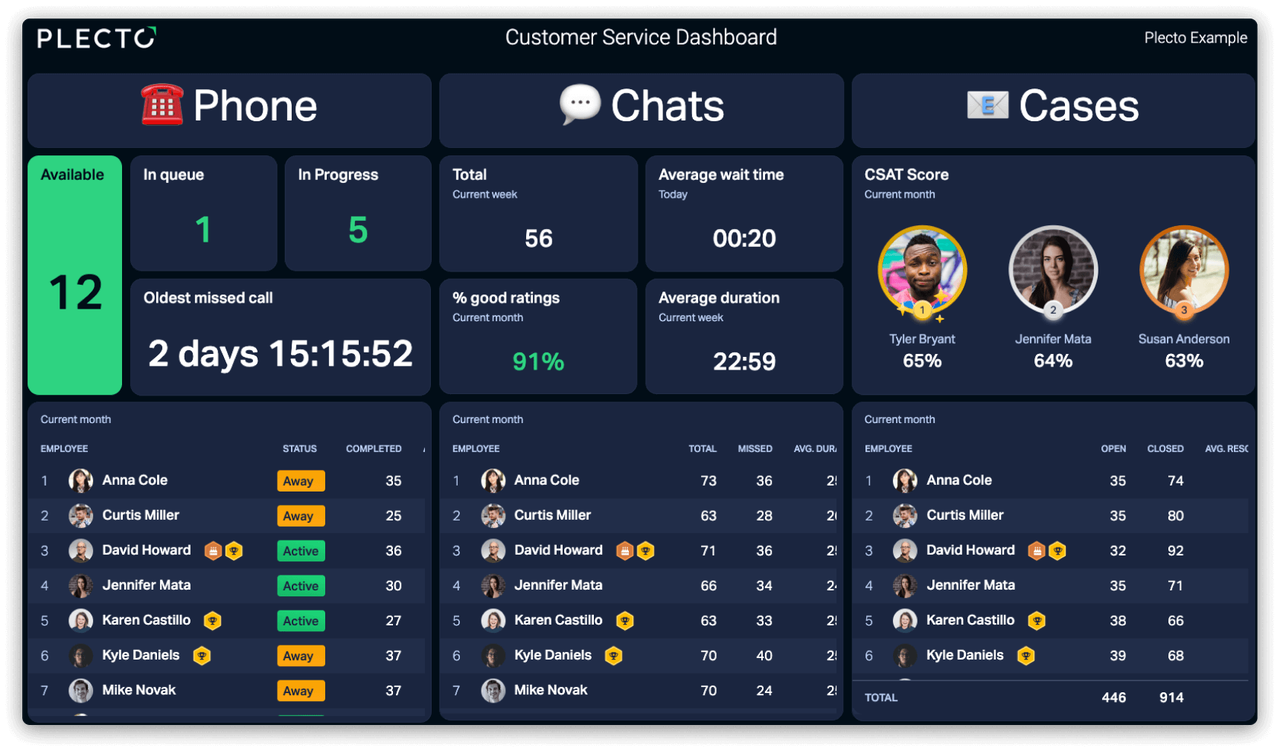Nowadays, companies are generating a constant flow of data on a daily basis, which is also becoming more and more complex to handle. However, the number of companies becoming data-driven businesses is increasing… so there must be a good reason behind it!
Did you know that, according to research carried out by Invespcro, businesses with a data-driven culture got between five to eight times as much ROI as businesses without?
If you are still not convinced about using data-driven decision-making in your daily business decision-making, or you want to know more about what is a data-driven culture and how to become a data-driven business… Keep on reading!
What is a data-driven culture?
Having a data-driven culture involves focusing your decisions on trackable and measurable facts; aka, data, to define your business strategy. This also entails that there’s no longer space for intuition or “gut feeling” in management meetings because business’ guidelines are data-derived.
Data can come in different forms, for different purposes. For instance, a marketing department might want to base the next ad campaign on qualitative data gathered from their target group. Sales departments, on the other hand, would rather decide their monthly KPIs according to an advanced analysis of the business’ internal performance.
Nevertheless, data is not anymore found in endless databases or in the managers’ offices. The main purpose of a data-driven culture is to bring employees closer to the organization’s daily data so that it can be incorporated into their routines.
The idea is for the team to have an accurate and realistic framework on which to base their initiatives and decisions. And not only that but also for them to actively contribute to creating shareable data that can then be used by any other team member when needed. This framework, therefore, helps promote an effective data-driven culture where every employee has the best overview of the organization’s current situation.
Why Data-Driven Culture is Important
It’s not until you experience the benefits yourself that you can truly grasp why data-driven culture is important. The following are just a few positive outcomes you could expect, to whet your appetite.
Benefits of a data-driven culture include:
- Promote transparency in the workplace
- Align and improve collaboration between departments
- Helps guide future strategy and planning
- Identify challenge areas and address them in real-time
- Identify top performers and individual agent’s strengths
- Boosts employee engagement and motivation
- Optimize business process and performance efficiency
Remember the constant flow of data that your company is generating daily? Involving all your employees in a data-driven culture allows you to make more efficient use of all that data that, otherwise, would go to waste. This way, each department can get a more detailed insight into the data that concerns their performance, to gain the most detailed learnings to improve their future decision-making. Here we’ve outlined three detailed benefits of a data-driven culture:
1. Promote transparency among employees
All your employees want to know how the organization is doing, and the more accurate insight they can get, the better! Enabling your teams to not only see data but also adopt it into their routine at work promotes an atmosphere of transparency that you want for your business. Access to data equals understanding, which also equals better individual performance in each area of expertise. Allow your employees to know what’s happening while it’s happening, and let’s talk about it!
2. Data-driven conversations are in
What you see is what you get—it’s as simple as that. Having a data-driven culture involves, of course, data-driven conversations among employees from different departments. You are about to promote richer interactions between your staff members by just showing them what has always been there. For instance, one of your customer support employees can now see that ROI is decreasing in the marketing department. Seeing the data makes him remember a conversation with a client where they talked about this platform that business people are now using. Maybe it can be something interesting for marketing to consider for their next budget planning. The fact that your teams are divided into departments doesn’t mean that they can’t have great ideas for one another. After all, they are all working together for the same company’s goals!
3. Daily peer motivation
Promote a data-driven culture where data is celebrated, or learned from, together. Showing your employees their overall performance as a team helps increase their sense of belonging to a group and, therefore, their engagement with the business. It’s also motivating for your employees to be able to see their progress towards a goal, while openly talking about it with the rest of the team. Encourage collaboration among your employees and knowledge sharing among departments. Data can also help bring your team together!

How can you create a data-driven culture?
So we’ve covered what it is, and why it’s important, and now it’s time to put your knowledge into action as we outline the 5 steps to start building a data-driven organization today. As you work through the steps, take note of some of the considerations that we’ve outlined that can help you to build an even more effective data-driven culture, no matter what industry you’re in.
1. Re-educate your employees
As with any other changes in life, your staff needs to be informed of the circumstances. If they have never been involved with the businesses data, why now? A data-driven culture starts at the bottom, so make sure to involve your entire team in this new stage for your business. The more resources they can rely on during the transition, the sooner they’ll adopt the new mindset.
2. Democratize your data
A data-driven culture is an all-in, which means you need buy-in from your entire company, not just the top! So data needs to be transparent for all teams. Employees should be able to find the data they need for their decision-making, as well as be aware of the current organizational situation at any moment. If you want to become a top-performing company, you need employees to be invested. When your team feels trusted, respected, involved, and valued, they are more likely to invest themselves in the company's outcomes. Transparent, democratized data is the first step in achieving this.
3. Security first
For data to be shareable within the organization, you need to first make sure that the data protection rules and privacy concerns are updated. This will just help guarantee that the data-driven culture is as safe as it can be. If you’re dealing with data in some way, it’s more than likely that you’ve heard about GDPR. If not, here’s an article that will quickly fill you in on what you need to know about GDPR! With privacy and security becoming increasingly more important, regulations are tightening and it’s vital that you’re doing the right thing—after all, it’s there to protect us, too!
Build your first dashboard.
Start your 14-day free trial today
4. Clean your repositories
Now that your data is about to be used, it’s time to give it a fresh look by removing old and useless information. Make sure that the data you have is the data that can be used, and nothing else. You’ll find that once you start using your data on a regular basis, you only want the most important information to be in front of the right people. Too much of something good can sometimes be a bad thing—that is, too much data can be a distraction to people if it’s unnecessary to them. But that’s not to say that the same data is incredibly useful for you. The point is to use your data wisely, and a clean-up is a great start to achieving that.
5. Make your data accessible
Similarly, the purpose of a data-driven culture is certainly not to have employees wasting time looking for a specific piece of information. Therefore, create inventories or use a software tool that allows filtering a search to get the right result in just a few clicks. Plecto offers a great solution to data that allows you visualize your most important KPIs on real-time data dashboards that can even be shown on TV screens around the office! When data is visible and accessible, employees can see how they’re performing at any given time, and become even more motivated to outperform their targets.
With these simple steps, you are well on your way to building a data-driven culture that will produce clear and promotion-worthy results instead of scratching your head wondering how your team is performing.
Looking for data-driven culture examples? Look no further than Google, Disney, Starbucks, Mcdonald's, Adobe, or Uber. As some of the most recognizable and top-performing companies in the world, it’s hard to ignore the fact that data matters.
Build your data-driven culture, starting with Plecto!
Now that you are stocked with all you need to know about building a data-driven culture, you’re ready to start putting it into action. If you want to take it a step further and really impress at your next management meeting, give Plecto a go!
Designed specifically to promote a data-driven culture, Plecto allows you to automatically display real-time data from your most-used dialler, CRM, and tracking systems on user-friendly data dashboards with that fresh, modern aesthetic. Or, get your data going with gamification tools that make everyday KPIs more enjoyable and motivating for all your teams!
Create contests in a matter of seconds, illustrate your team’s progress with a leaderboard, or celebrate every success with personalized notifications. Sign up for your Plecto 14-day free trial and start delivering exciting results backed by a data-driven culture!




